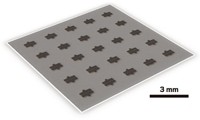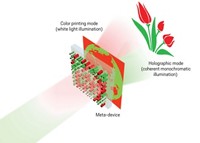Advertisement
Grab your lab coat. Let's get started
Welcome!
Welcome!
Create an account below to get 6 C&EN articles per month, receive newsletters and more - all free.
It seems this is your first time logging in online. Please enter the following information to continue.
As an ACS member you automatically get access to this site. All we need is few more details to create your reading experience.
Not you? Sign in with a different account.
Not you? Sign in with a different account.
ERROR 1
ERROR 1
ERROR 2
ERROR 2
ERROR 2
ERROR 2
ERROR 2
Password and Confirm password must match.
If you have an ACS member number, please enter it here so we can link this account to your membership. (optional)
ERROR 2
ACS values your privacy. By submitting your information, you are gaining access to C&EN and subscribing to our weekly newsletter. We use the information you provide to make your reading experience better, and we will never sell your data to third party members.
Materials
Solar-Cell Layer Comes Into View
by Mitch Jacoby
August 8, 2011
| A version of this story appeared in
Volume 89, Issue 32
Combining analytical transmission electron microscopy with a data analysis technique provides a novel way to image nanoscale features in the photoactive layer of organic photovoltaic cells, according to Martin Pfannmöller of Germany’s Heidelberg University and coworkers, who developed the procedure (Nano Lett., DOI: 10.1021/nl201078t). The imaging technique makes it possible to relate the nanoscale appearance and morphology of the critical solar-cell component to the cell’s photovoltaic performance. Flexible polymer solar cells typically contain a photoactive region consisting of a mostly amorphous blend of a conducting polymer and a fullerene derivative. Those materials, which serve as electron donor and acceptor, respectively, exhibit little visual contrast difference and are tough to distinguish via microscopy. By combining an energy-filtering method, which analyzes the energies of electrons passing through a transmission electron microscope specimen, with a computational procedure, Pfannmöller and coworkers developed a way to impart sharp image contrast to the chemically distinct materials. The method reveals the location and shape of nanoscale domains of each of the pure materials, as well as the interconnecting mixed phases.





Join the conversation
Contact the reporter
Submit a Letter to the Editor for publication
Engage with us on Twitter